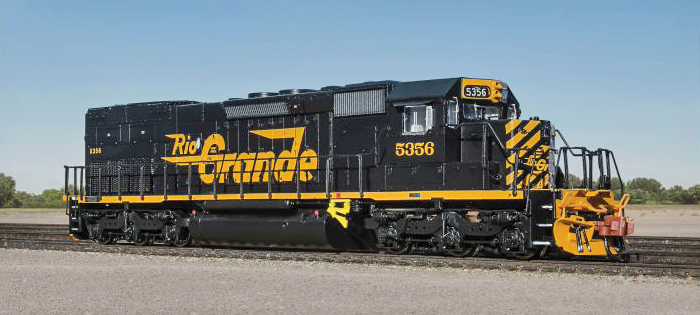All about the community of model railroading and rail enthusiasm
October 31, 2024

The recently released Scale Trains N-scale Tunnel Motors represent a variation of the popular Electro-Motive Division SD40-2 diesel locomotive that conquered the rocky terrain of the Western U.S. in the 1970s and 1980s.
EMD’s 3,000-horsepower, six-axle SD40-2 locomotives, built from 1972 to 1989, were best-sellers because they adapted to the environments where they operated.
The unique Tunnel Motor, or SD40T-2, was the backbone of the Southern Pacific and Denver & Rio Grande Western fleets for more than a decade.
Scale Trains has replicated the locomotive in its SD40T-2 Rivet Counter line in two of the three prototype roads that employed the diesel − Denver & Rio Grande Western and Southern Pacific. Two models also are available in Union Pacific, which absorbed the Rio Grande and SP.
The Cowcatcher received four DCC/Sound samples of the SD40T-2 for review – one each in SP’s three paint schemes and the Rio Grande unit with the Mars lights.
The Prototype
The SD40T-2’s primary spotting feature is the see-through air intakes at the bottom of the back of the long hood.
By being lower, the intakes better helped cool the locomotive while it traveled through tunnels and snow sheds. The locomotive could take in more fresh air than with intakes at the top where diesel exhaust was trapped.
The lower intakes ultimately prevented loss of horsepower due to overheating (or even a shutdown).
EMD adopted the design on SD40 and SD45 units in the 1970s after General Electric introduced low air intakes on its U30C and U33C diesels. The Rio Grande and SP ordered over 300 SD40T-2s; SP employed the lion’s share of about 230 units, including several with the longer “snoot nose.”
The St. Louis Southwestern Railway ordered 10 snoots.

The Model
Scale Trains N-scale Tunnel Motors were announced at the end of January and arrived in October. Most of the models are sold out on the company’s website, but they can be found at some retailers.
They are worth the effort to find.
Among the many details, Scale Trains’ Rivet Counter model features see-through tunnel motor grilles, a first in N scale, according to the company.
The model is offered in SP’s and Rio Grande’s as-delivered scheme with road-specific details and LED lighting.
SP models are available in “Speed Lettering” and “Speed Lettering/Powered by the Mile” logos. As-delivered models come in short and snoot nose variations.
Scale Trains also offers Kodachrome pre- and post-1980 models, each available in one road number. The bright red and yellow Kodachrome units were repaints of Southern Pacific and Santa Fe locomotives for the proposed merger in 1984.
Two Rio Grande models – each lit with either operating Mars or Gyralites – are offered in multiple road numbers plus unnumbered versions.
Scale Trains also produced the models in EMD’s UP snoot nose (two road numbers) and “Lightning Stripe” (one road number) versions.
The appropriate era is the mid- to late-1980s.
In addition to DCC/Sound, the model is available in DC/DCC Ready.
In all, Scale Trains’ SD40T-2 is a smooth-running model with lots of features and detail. It stands out just like the prototype.
See a complete review in the January/February 2025 Cowcatcher.